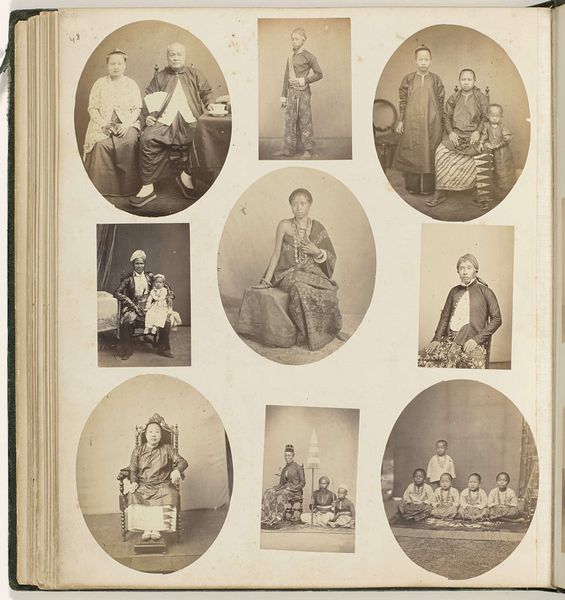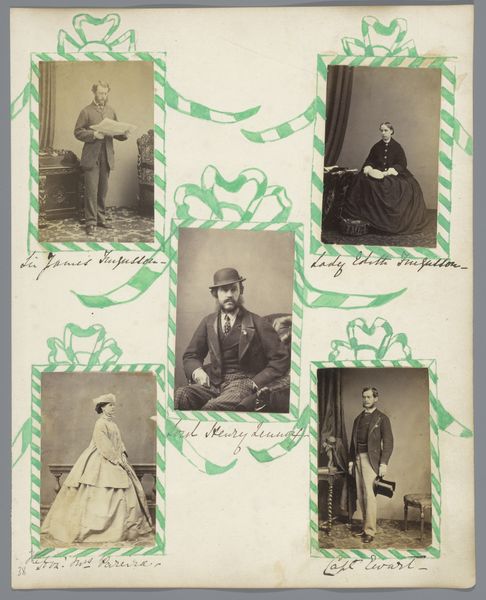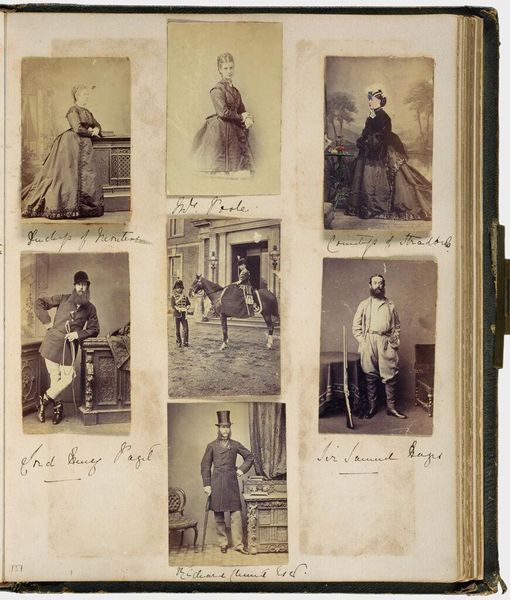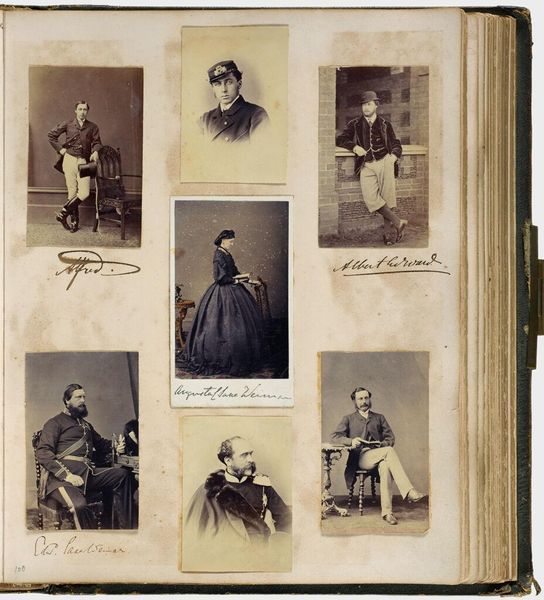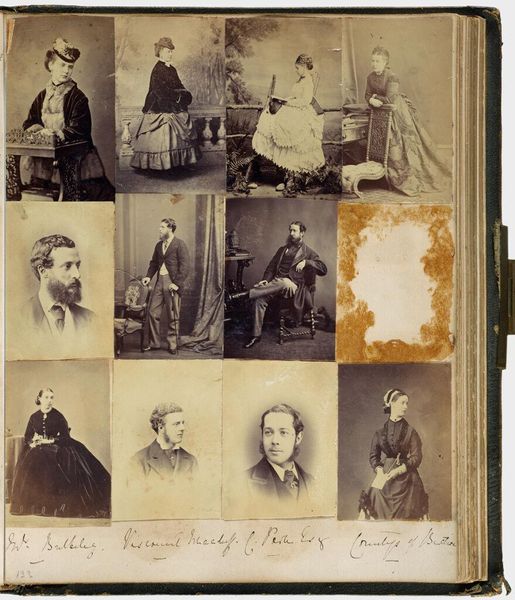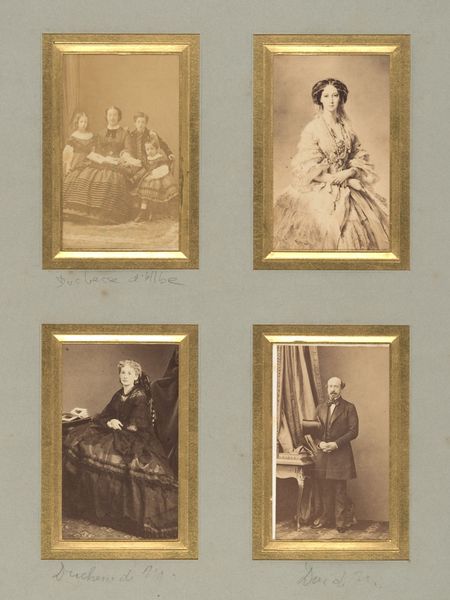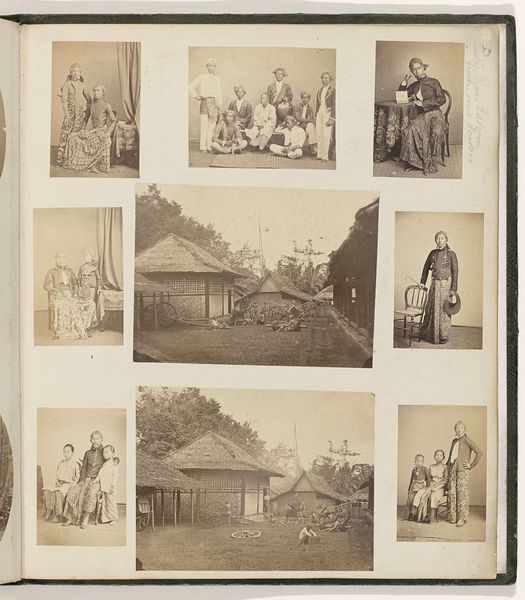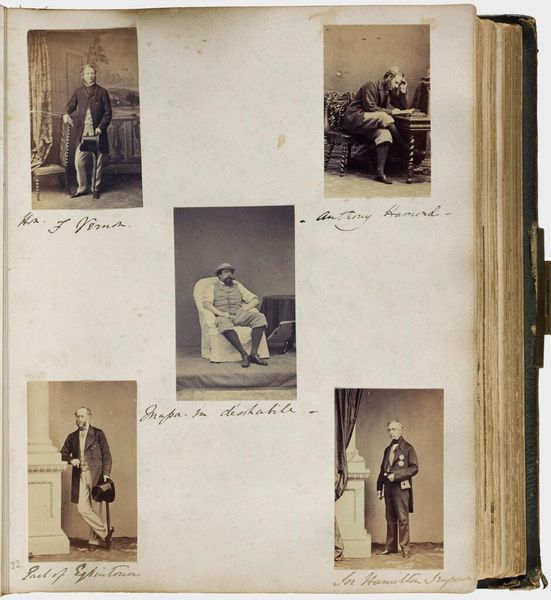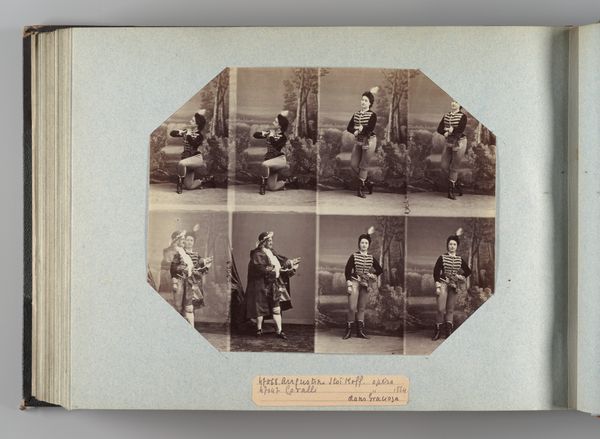
photography
#
portrait
#
asian-art
#
photography
Dimensions: height 365 mm, width 305 mm, height 162 mm, width 112 mm
Copyright: Rijks Museum: Open Domain
Editor: This is a photograph from Woodbury & Page, titled "Javaanse hoogwaardigheidsbekleders," dating back to sometime between 1863 and 1866. The sepia tones and the subjects' formal poses create a palpable sense of gravity. I am curious, what is your perspective on this work, considering its historical and cultural significance? Curator: From a formalist perspective, consider first the visual structure. The arrangement of individual portraits on a single plane prompts us to compare and contrast the sitters. Notice the repetition of oval frames – a compositional element that unifies the diverse figures while simultaneously isolating them. Observe also how each portrait occupies its own distinct space, creating a mosaic of Javanese aristocracy. What do you make of their costumes, considering line and form? Editor: I hadn’t thought about the oval frames providing unity while isolating, which is fascinating! The garments, especially in the central portrait, are highly ornamented and ornate, while other figures show off varying styles and embellishments in fabric patterns, jackets and headwear. But in the context of photography, where is the real meaning: with the subject or in its rendering? Curator: Meaning, formally speaking, resides in the photographic act, its tonality and clarity and in the interplay between subject, surface, and presentation. Woodbury & Page created something far more important, given how it has survived. It gives precedence to these Javaanse figures, elevating them through artistic design. To appreciate its nuances, scrutinize how texture and light interact to reveal the status of these figures. It prompts a focus on pure visibility. Can one ever separate an object of historical depiction from its depiction, though? Editor: You're encouraging me to see it as an object, not just an image, a work of art with its own structural language. I understand a formalist interpretation sheds new light on how photography can turn its subject into high art by highlighting design. Curator: Precisely. What do you think will most engage the viewers of our tour? Editor: Perhaps it will make them realize art is about what is visually interesting, not necessarily the subject of art itself!
Comments
No comments
Be the first to comment and join the conversation on the ultimate creative platform.
